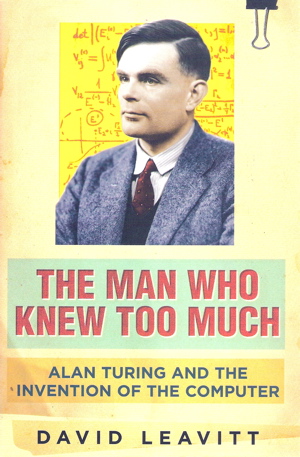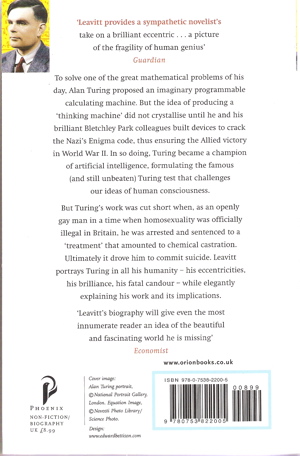Wednesday November 7, 2007 6:20 am Lennox Head, NSW Australia
A. Morning Musings
6:20 am

| Immediate |
Description |
Time |
| Science |
Continue making notes for "Deep Simplicity" |
2 hr |
| Literature |
Continue reading "Dylan on Dylan" |
2 hr |
C. Actual Learning Activities
6:40 am
Science 8
November 7, 2007
6:40 am
Continuing my notes for "Deep Simplicity" (2004) by John Gribbin.
Chapter 3 Chaos Out of Order
- "But the kind of chaos we are discussing here is completely orderly and deterministic, with one step following on from another in an unbroken chain of cause and effect which is completely predictable at every stage - in principle. It is just that in practice it is impossible to predict in detail what is going to happen more quickly than events unfold in real time." [p. 70]
- "The best example of the period-doubling route to chaos comes from another area of science entirely, and hints at just how fundamental and widespread the implications of chaos are. There's a very simple equation, called the logistic equation, that does a rather good job of describing how the population of a species changes from one generation to another. ...
x(next) = Bx(1 - x)
... Multiplying out the right-hand side ... highlighting the fact that this process is non-linear (because of the x-squared term) as well as involving feedback (through the iteration).
- Preparing the above notes for chapter 3 led immediately to two additional thoughts:
- I presented a paper on this logistic curve for MCATA about a decade ago.
- I need to return to a task I set myself a few years ago - namely the scanning of all my papers and the production of a DVD containing them.
- The Peano curve, the Cantor Set, the Sierpenski Gasket & the Koch Snowflake are all examples of entities with fractional dimension.
- "If there is an attractor for the fern shape, based on that kind of simple rule, it is no surprise that some plants grow into ferns, even though they need not be programmed to have that shape. ... It is randomness plus a simple iterative rule (or rules) that makes the complexity of the world." [p. 91]
- This reminds me of the book A New Kind of Science by Stephen Wolfram.
- Which in turn reminds me of the book by Roger Penrose on science, The Nature of Reality.
- Both books are a form of attractor - I continually run across examples that brings these two books to mind.
- The iteration that produces the Mandelbrot set involves the expression Z^2 + C where Z is a variable complex number and C is a constant complex number. Note that this is also a non-linear expression that is iterated. The resulting images is probably the most complicated entity ever investigated. [p. 96]
Chapter 4 The Edge of Chaos
- "Dissipation of energy is an essential feature of non-equilibrium thermodynamics." [p. 104]
- "If systems are close to equilibrium, they generally respond in a linear fashion to changes in their environment." [p. 105]
- It was Ilya Prigogine who showed ... that a dissipative system in the linear regime settles down not into the state of death corresponding to maximum entropy (as it would be in equilibrium), but into a state where entropy is being produced as slowly as possible, and the dissipative activity is ticking over a minimum rate." [p. 105]
- "Over the following two decades, the work of Prigogine and his colleagues in Brussels ... focused on the attempt to provide a mathematical description of thermodynamics for systems far from equilibrium, in the non-linear regime where small changes in the external environment can produce large changes in the system." [p. 106]
- One example is the formation of Bernard cells when certain liquids are uniformly heated. [p. 108]
- "A system can only be held in an interesting state away from equilibrium if it is dissipative and open to the environment, so there has to be an outside source of energy." [p. 108]
- "In many cases, the advantage of a Turing machine is that the instructions telling it how to carry our a computation (the algorithm) are far more compact than the fruits of that calculation. ... Turing also showed that there are systems which cannot be 'compresses' algorithmically, and whose most compact representations are themselves. ... In particular, the shortest description of the the Universe is the Universe itself." [p. 116]
- "D'Arcy Thompson's classic book On Growth and Form." [p. 117]
- This is another book I must reread when I return to Lethbridge.
- Turing tackled the fundamental problem of how structure emerges in the developing embryo... [p. 117]
- I must reread Shrodinger's book What is Life? when I return to Lethbridge.
- "Turing described how the symmetry of an initially uniform mixture of chemicals could be spontaneously broken by the diffusion of different chemicals through the mixture.
- Turing, A. (1952) The chemical basis of morphogenesis. Philosophical Transactions of the Royal Society, vol. B237, p. 37. "This is now regarded as one of the most influential papers in the whole field of theoretical biology." [p. 118]
- "Murray found that not only the spots of the leopard but also the stripes on a zebra, the blotches on a giraffe, and even the absence of patterning on the coat of a mouse or an elephant, can all be explained by the same simple process, involving diffusion of actuator and inhibitor chemicals across the surface of the developing embryo at a key stage during its growth. James Murray (1988) How the Leopard Gets Its Spots. Scientific American, vol. 258, 3, p. 80. {p. 126 - 127]
- "All we want to carry away from this discussion is the knowledge that in morphogenesis and in evolutionary biology sometimes small effects produce small changes and sometimes small effects produce big changes, and that this can be understood, in principle, in terms of pattern-formation models involving very simple chemistry." [p. 135]
12:30 PM
I am listening/watching The Travelling Wilburys DVD on my laptop while adding the scans of a book I also bought earlier this morning.
The book is "The Man Who Knew Too Much" by David Leavitt:
The book appealed to me because of the description of the Turing machine which is what I was just reading about in John Gribbin's "Deep Simplicity". The interconnections are fascinating.



